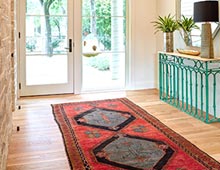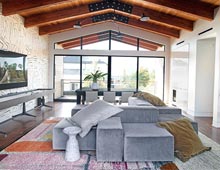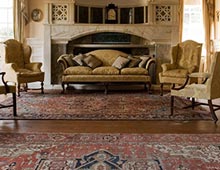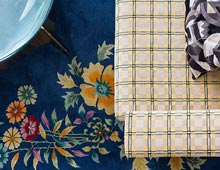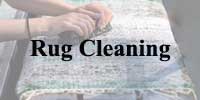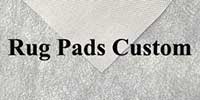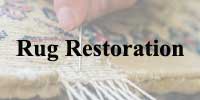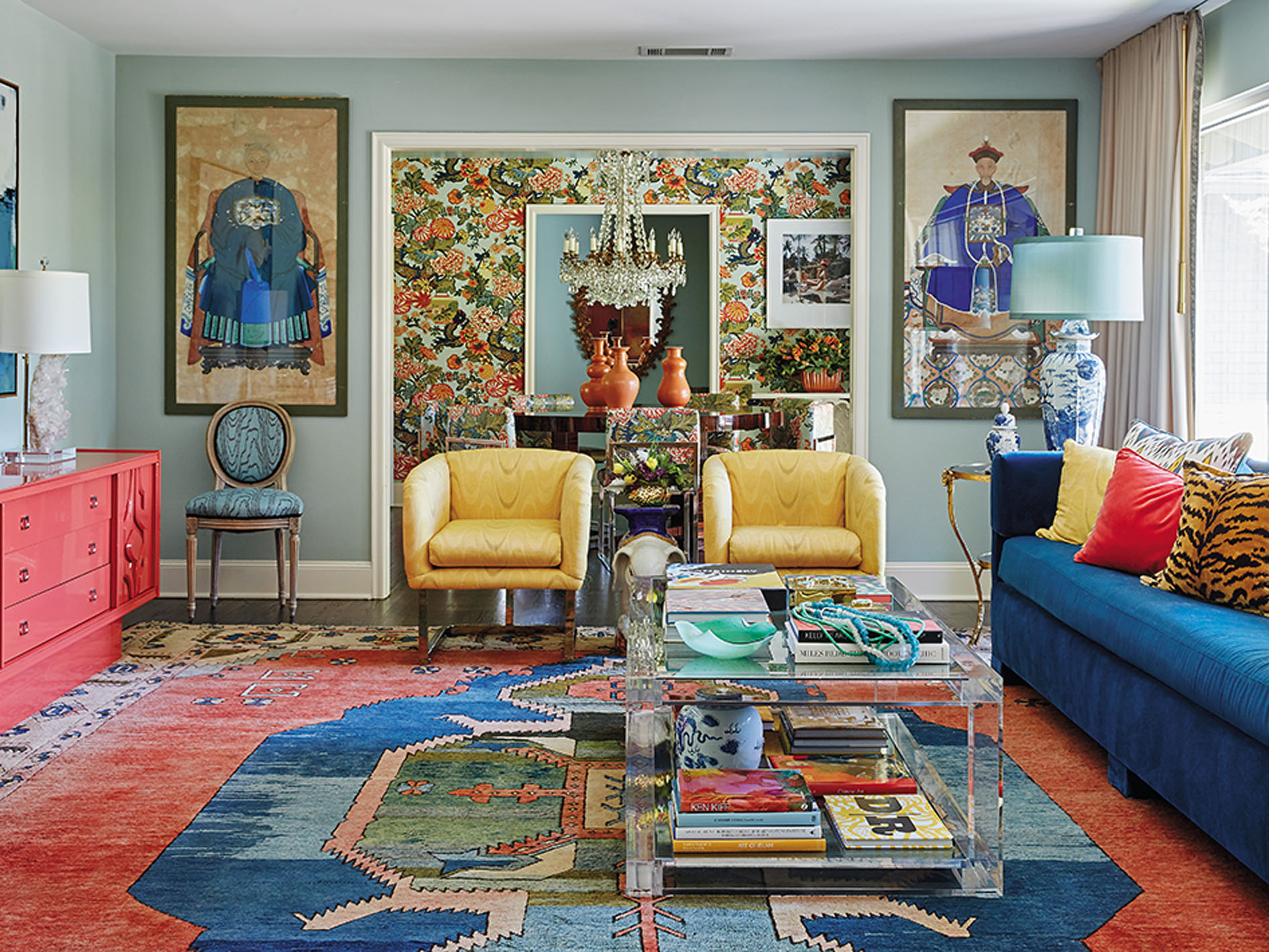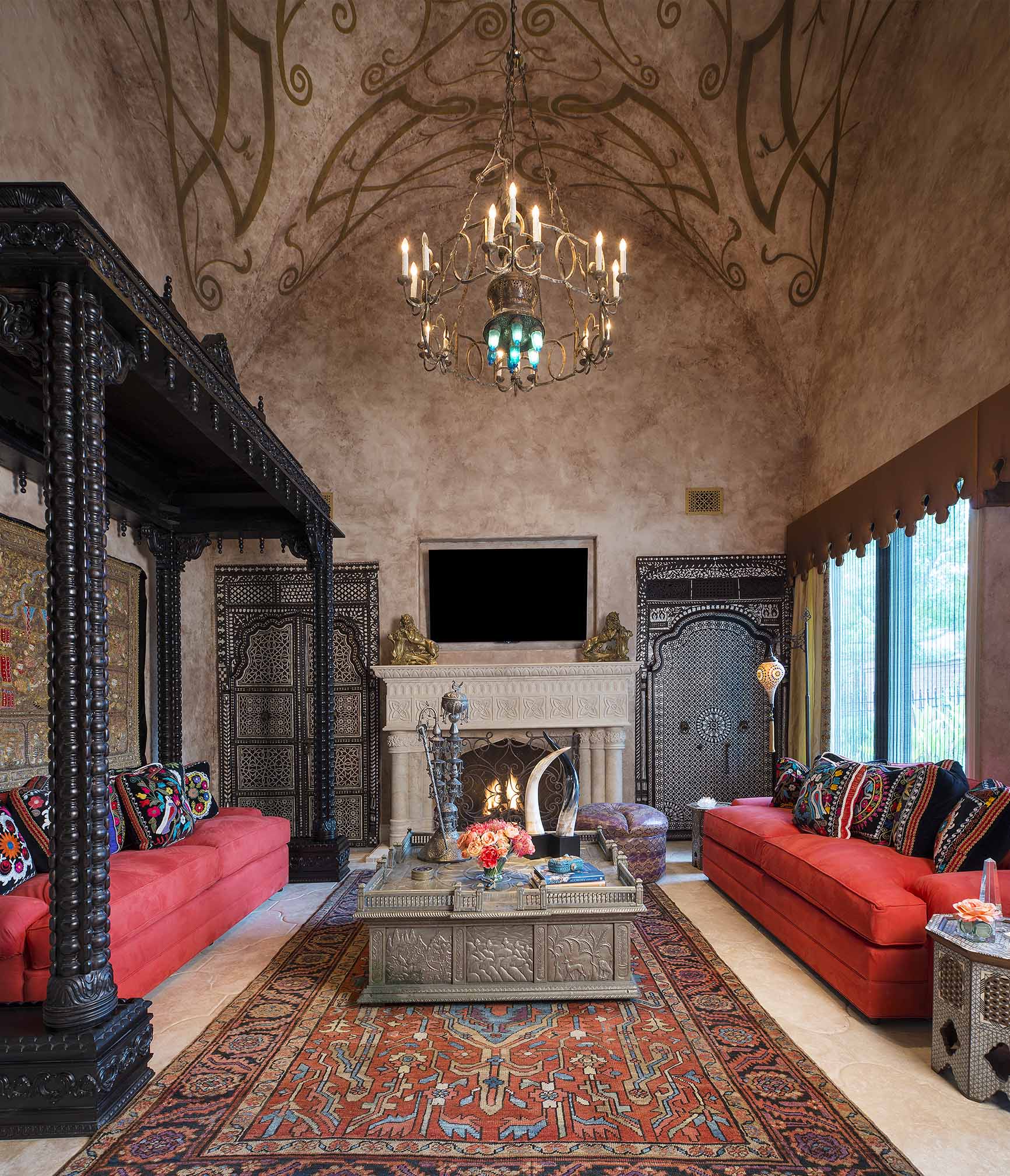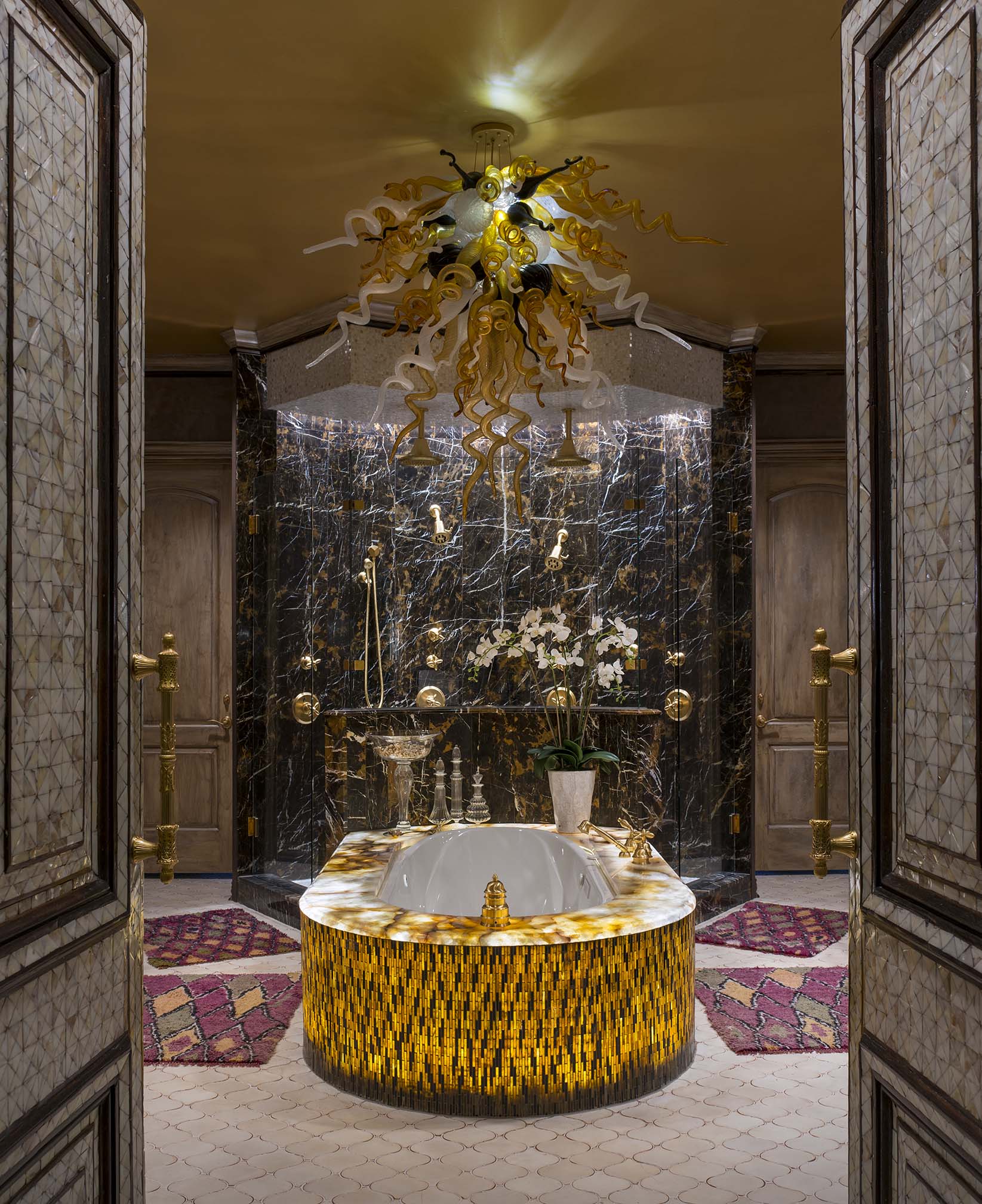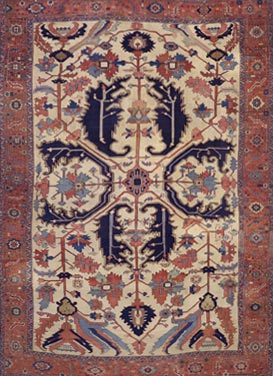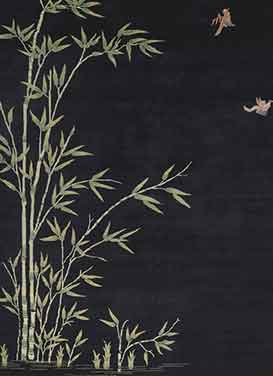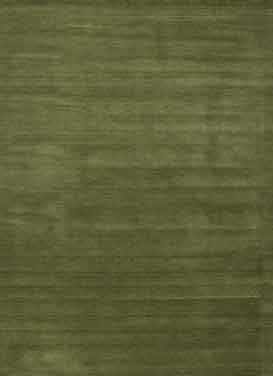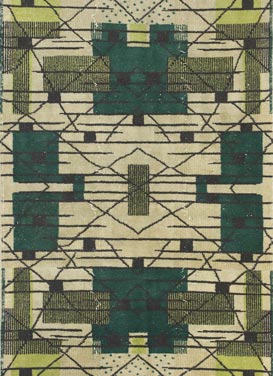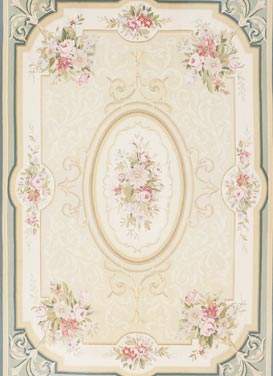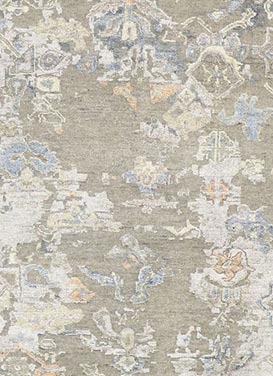Blog
Esmaili Rugs Blog
Dallas Rug Store: Be Bold this Spring | Drab to Dreamy
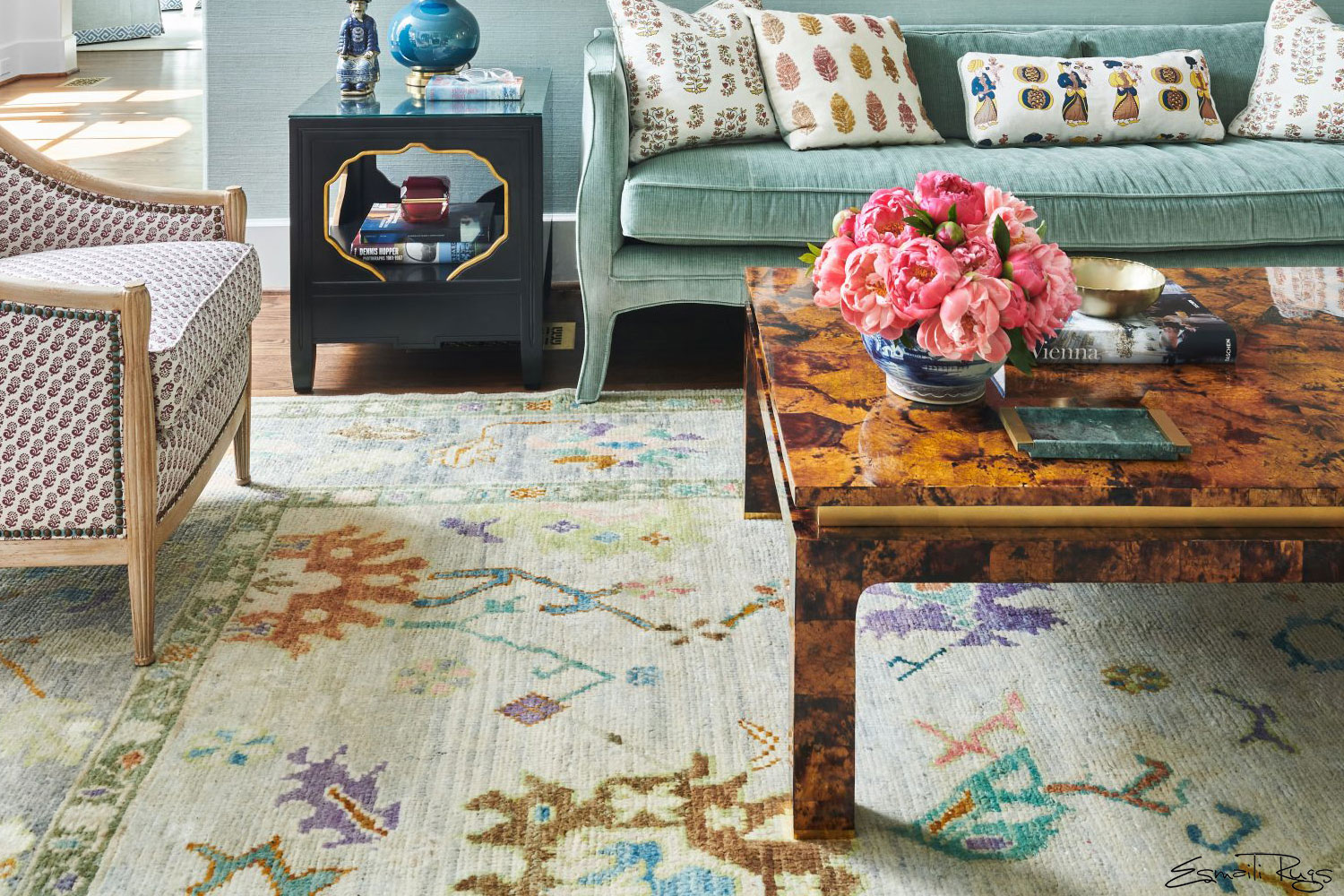
Be Bold this Spring | Drab to Dreamy
Colorful Contemporary Area Rugs for Every Style and Budget
Spring is a time when life and color replaces the dreary and dark so it seems like the perfect time to liven up our favorite spaces too. That empty floor, even one made of luxurious oak planks, calls for a rug to pull a home together and bring some color into your life. Sometimes spring cleaning means throwing out a tired rug you’re tired of looking at, and it’s time for a new one that will last you.
 Spring is full of inspirations, from seasonal colors being released by design gurus to a theme of renewing yourself and your surroundings. Nature has inspired textiles and home design since the origin of the craft itself. When birds appear in vintage rugs, it typically symbolizes good luck, power, happiness and love. Flower motifs can be bold, bright and dramatic in dazzling patterns which can enrich and liven up any space. Let your imagination fly this spring.
Spring is full of inspirations, from seasonal colors being released by design gurus to a theme of renewing yourself and your surroundings. Nature has inspired textiles and home design since the origin of the craft itself. When birds appear in vintage rugs, it typically symbolizes good luck, power, happiness and love. Flower motifs can be bold, bright and dramatic in dazzling patterns which can enrich and liven up any space. Let your imagination fly this spring.
 Many of these rugs have colorful patterns, making them a focal point of a room. When choosing a rug like this, make sure to trust your gut because such a stand out piece will draw your attention. Building a room around a rug is the easiest step towards a chic interior but it isn’t hard to make sure these strong patterns fit with your current furnishings as well. Take photos of your furnishings and picture the rug touching those colors you already have.
Many of these rugs have colorful patterns, making them a focal point of a room. When choosing a rug like this, make sure to trust your gut because such a stand out piece will draw your attention. Building a room around a rug is the easiest step towards a chic interior but it isn’t hard to make sure these strong patterns fit with your current furnishings as well. Take photos of your furnishings and picture the rug touching those colors you already have.
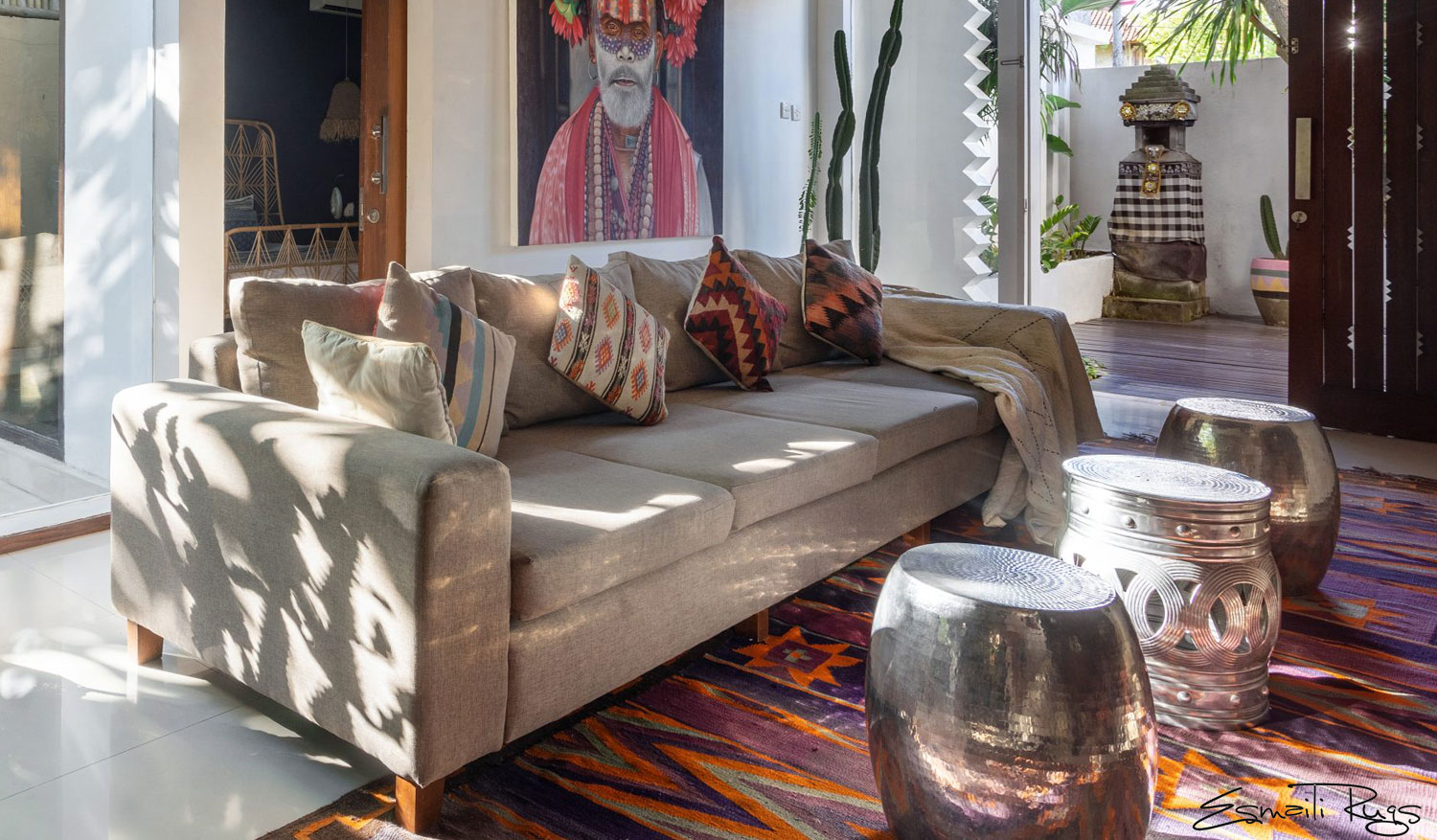 Bold, dreamy and somewhat rebellious, Pantone recently announced their 2018 color of the year, choosing “a dramatically provocative and thoughtful purple shade, PANTONE 18-3838 Ultra Violet [which] communicates originality, ingenuity, and visionary thinking. Pantone’s advisable pops of purples can bring a bright elegance to your room while natural motifs like birds and floral patterns bring meaning and history into a modern home. Vintage and antique rugs can evoke the mystery of a different time and place. Spring is the beginning of a new story each year, and these bold antique rugs evoke a bright excitement about warmer and more colorful days to come.
Bold, dreamy and somewhat rebellious, Pantone recently announced their 2018 color of the year, choosing “a dramatically provocative and thoughtful purple shade, PANTONE 18-3838 Ultra Violet [which] communicates originality, ingenuity, and visionary thinking. Pantone’s advisable pops of purples can bring a bright elegance to your room while natural motifs like birds and floral patterns bring meaning and history into a modern home. Vintage and antique rugs can evoke the mystery of a different time and place. Spring is the beginning of a new story each year, and these bold antique rugs evoke a bright excitement about warmer and more colorful days to come.
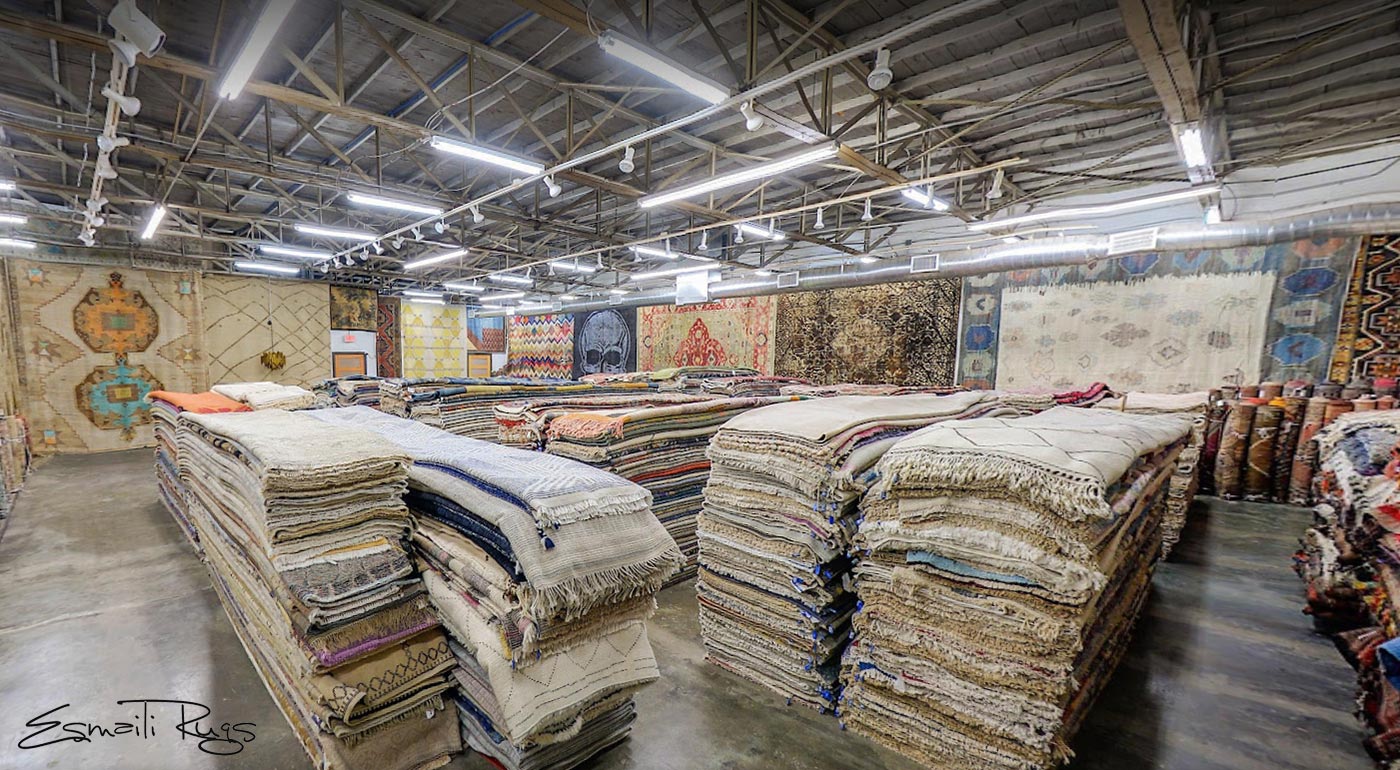 Whether you’re trend tracking or just waiting for something to fall in love with, this color is soothing and inspires relaxation. And who couldn’t use more of that? With more than 7,000 carpets at your fingertips, shopping rugs online with Esmaili Rugs, you’ll be able to find nearly every color under the bright spring sun in our Dallas Rug Gallery Showroom. For more information, please browse our site and feel free to fill out a contact form.
Whether you’re trend tracking or just waiting for something to fall in love with, this color is soothing and inspires relaxation. And who couldn’t use more of that? With more than 7,000 carpets at your fingertips, shopping rugs online with Esmaili Rugs, you’ll be able to find nearly every color under the bright spring sun in our Dallas Rug Gallery Showroom. For more information, please browse our site and feel free to fill out a contact form.
An Interior Designer's Guide to the Dallas Design District
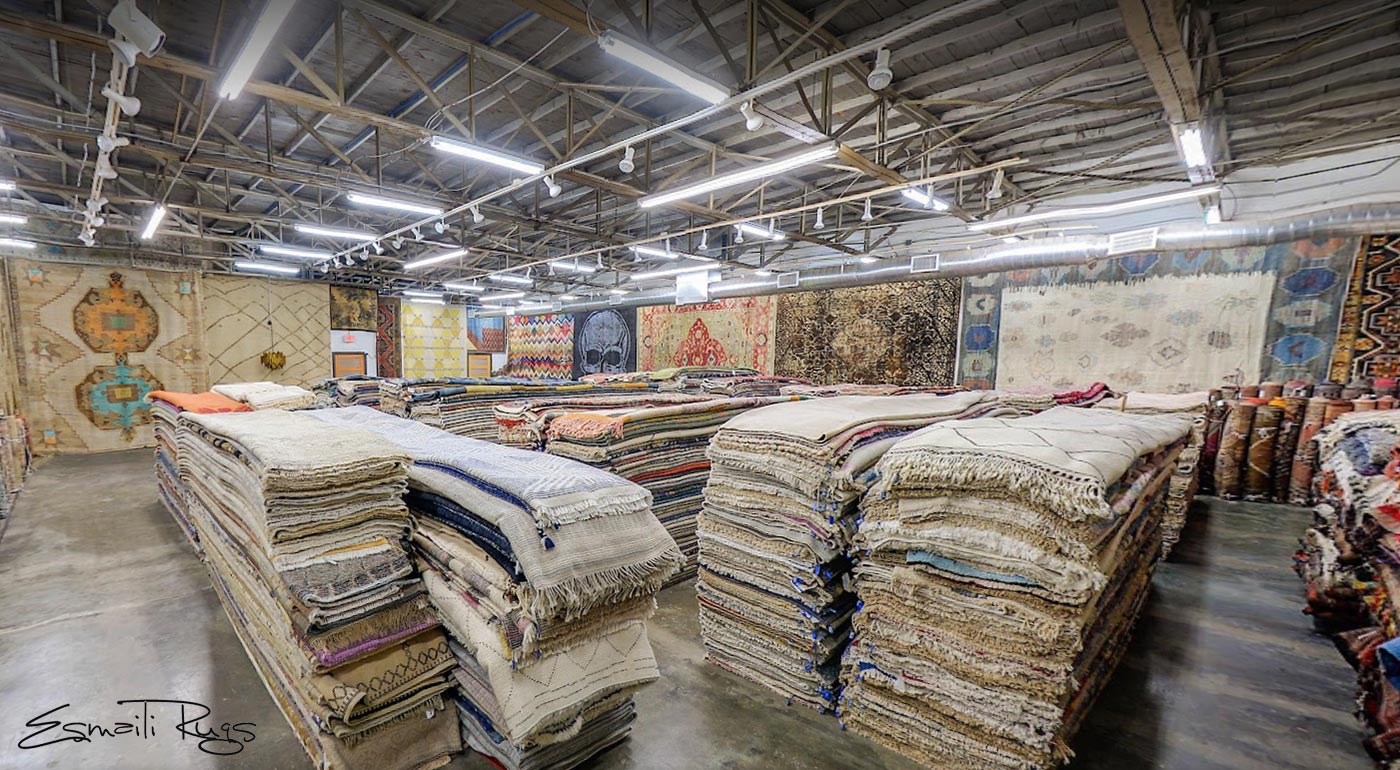
Dallas isn’t just about a great football team, urban cowboys and gushing oil wells. Hidden like a glistening pearl inside an unopened oyster, the Dallas Design District is an interior designer’s ultimate dream venue offering dazzling art galleries, fascinating antique shops and stunning showrooms featuring upscale home furnishings reflecting every style and taste imaginable. As the leading antique rug company in Dallas, Esmaili is proud to be a member of this vibrant community of interior design, art and antique enthusiasts who know they can find exactly what they need or hope to find in the Dallas Design District.
History of the Design District from Esmaili Rugs in Dallas
In 1908, the Trinity River flooded downtown Dallas, leaving over 4000 people homeless and more than two million dollars in damage ($65 million if it were to happen today). City managers realized afterwards they needed to develop a permanent solution to prevent this catastrophe from happening again. Eventually, rerouting of the Trinity River supported by construction of a levee began in the late 1920s. A group calling themselves the Industrial Properties Association believed they could trigger a booming real estate business by dividing former floodway land among themselves.
Unfortunately, the stock market crash of 1929 and ensuing Great Depression delayed their prospects until after World War II, when investments and people poured into Dallas. With its freewheeling approach to business, Dallas and the Industrial Properties Association attracted the attention of Trammel Crow, a grain salesman who began establishing warehouses on land acquired from the IPA. Unprecedented demand for single-story warehouses lured owners out of crumbling, multistory warehouses, which contributed to the construction of the Stemmons Corridor and a rapid increase in commerce activity.
The swinging 60s and its embrace of postmodern/pop art brought a steady influx of interior designer studios, antique stores and furniture showrooms to the Dallas Design District, transforming warehouses into spectacularly successful shops. Today, the District is enjoying a colorful renaissance with five-star restaurants, charming boutiques, entertainment venues and upscale condo buildings augmenting its stellar reputation for having one of the world's the best selection of antique, vintage and modern rugs, furniture and other global goods available.
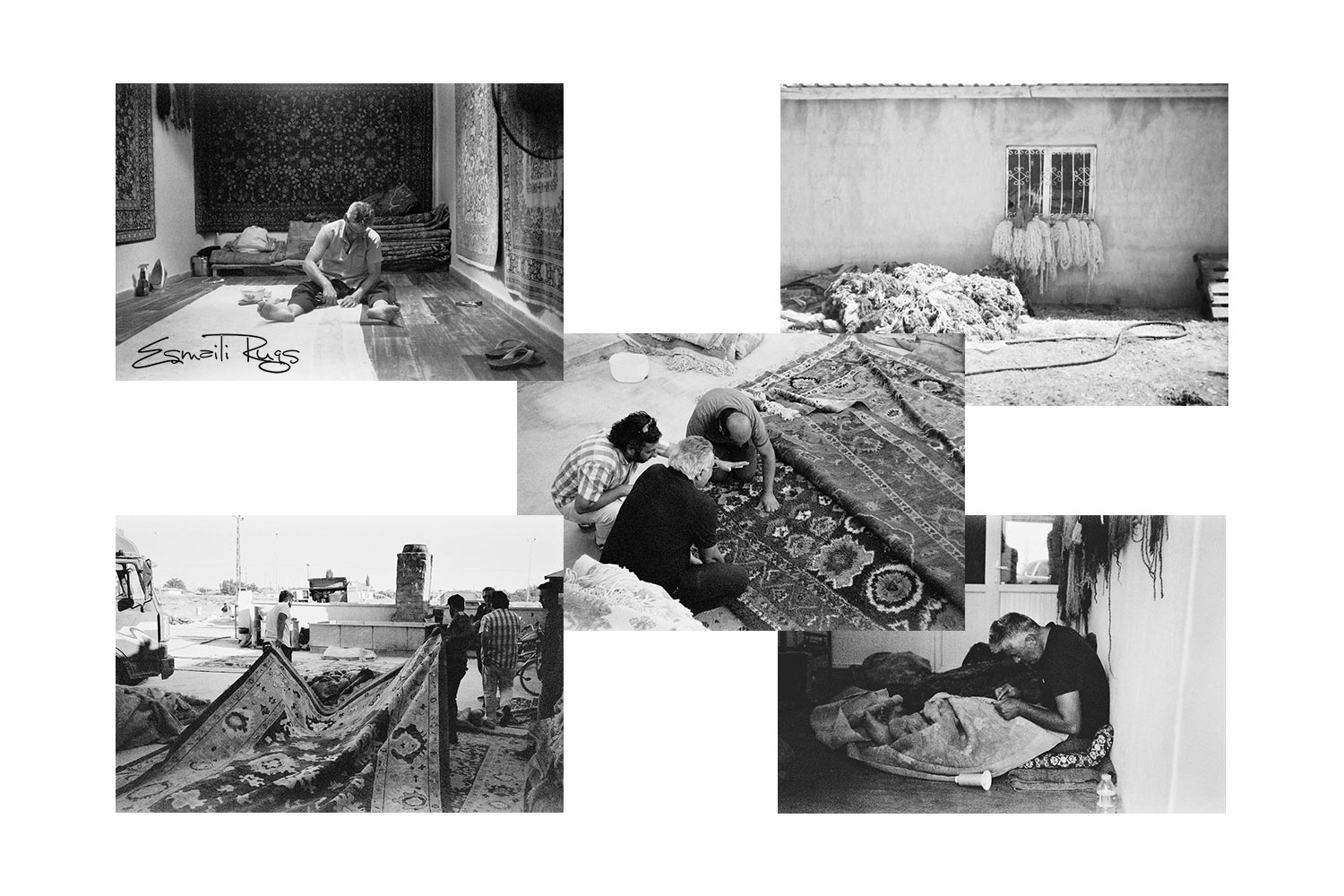 Dallas Design District Antique Rugs at Esmaili's
Dallas Design District Antique Rugs at Esmaili's
Although the Dallas Design District is home to several antique rug sellers, Esmaili is considered the premier antique rug collector in Dallas because of his dedication and insight into finding the most gorgeous Oriental rugs overseas and bringing them back to Dallas personally. Located on 1500 Hi Line Drive, Esmaili's Rugs and Antiques is the first place interior designers and rug enthusiasts stop by when visiting the Dallas Design District. With a selection of antique, vintage and modern Turkish, Persian, Moroccan and European rugs, Esmaili's is as much a part of this vibrant, exciting district as those first warehouses were almost a century ago.
Visit the Dallas Design District today to experience a delightfully different, creatively inspirational world full of many things to see and do. For more information about our inventory of antique rugs Dallas or for assistance with finding the best interior design shops, please call us at (214) 651-7847.
Understanding Symbolism in Persian & Other Antique Rugs

For those of us working in the antique rug world, the differences among Persian, Oriental, Moroccan, Turkish and kilim rugs are obvious, just as it’s obvious whether we’re standing on a factory-made, Oriental-style area rug or an authentic, antique Persian rug.
For the average person, though, such differences aren’t so obvious. But the weavers who produced fine Persian and other antique rugs tell their stories in every stitch. When you understand how to “read” the symbols and patterns in these rugs, you can connect with the weaver’s story, as well as that of his or her community and society. In fact, some rug experts can determine a rug’s city and country, or even the district, of origin, and the symbols and patterns found reveal historical insights about those places.
To help you understand the symbolism in antique rugs, we’ve put together this guide to the many symbols, motifs and designs found in rugs. When you can read and interpret an assortment of rugs, it’s likely that one of them will speak to you.
Rug Design Components

A rug design is comprised of several components, so let’s first define those:
- Borders: There are usually two borders on a rug — the main border is the widest section of design around the outside of the rug, while the guard border is usually narrow and lies inside the main border.
- Field: The field is the colorful background inside the borders.
- Medallion: Often, rugs feature a medallion in the center of the field. This is a large shape — round, oval or polyagonal — that sits prominently in the middle of the rug.
- Corner brackets, quarter panels or spandrels: These are designs that fill the corners of the field.
Typically, rugs will consist of all-over patterns, known as motifs, or they will contain a central medallion around which the rest of the rug is designed.
Your Guide to Antique Rugs
Now let’s talk about the various places from which our rugs originated. The term “Oriental rug” is ubiquitous, and it’s often used to refer to rugs that may or may not hail from the Orient. Esmaili Rugs & Antiques features stunning Oriental, Persian and other antique rugs, but each region produces distinctive rugs with its own unique traits.
ORIENTAL OR PERSIAN?

Persian rugs — considered the grande dame, the queen mother, the standard by which other rugs are measured — are Oriental, though not all Oriental rugs are Persian.
The term “Oriental rugs” applies to those rugs produced in Asia, in the region spanning from India through the Middle East and into China. Oriental carpets may hail from Pakistan, Tibet, Nepal, Turkey, China or Iran; however, no rug is considered Persian unless it was produced in Iran. Authentic Oriental rugs are hand-knotted.
Symbols in Oriental Rugs
Colors play a major role in conveying the story of a rug. Green, for instance, is the color of the Prophet Mohammed, and it is used sparingly, as it is least likely to be stepped on. It represents hope, renewal, spring and life. Others are as follows:
Red: wealth, courage, beauty, luck, joy or faith
White: purity and cleanliness
Blue: the afterlife, solitude and truth
Black: mourning or destruction
Brown: fertility
Yellow: power and glory, joy, the sun
Orange: devotion, piety, humility
Symbols in Oriental rugs can be found in various iterations in rugs from many locations, including Persian, Turkish, Indian and others. The primary symbols include:
- Ram horns: a symbol of male fertility, strength, bravery
- Herati: mahi flower, fish, good luck
- Boteh (paisley): seed of life, fertility, eternal life, pregnancy
- Elibelinde (hands on hips): Anatolian symbol of the mother goddess, mother with child in womb, fertility, abundance
- Tree of Life: symbol common in many religions, reminds us of our desire to become divine, symbol of the afterlife and immortality, hope, heaven, eternal paradise
- Dragon: wisdom, power, guardians of the tree of life, good fortune
- Stars and Crosses: protective motifs, found in rugs of varying origins, offer protection against evil, catastrophes or ill will. Connotes happiness.
- Mihrab: paradise gateway
- Camel: strength, endurance, blessing
- Peony: rank and wealth
- Lotus: immortality, rebirth
- Lily: spirituality, purity
- Gul (gol): sun, moon, stars
- Ying Yang: balance, harmony
- Amulets: Often (but not always) triangular in shape, sometimes in center medallion, intended to rid the user of evil spirits.
- Birds: Whether it’s a phoenix, an eagle, a peacock or a dove, most birds symbolize good luck, power, happiness and love. Some birds, however, such as ravens and owls, mean bad luck and death.
PERSIAN — THE FINEST OF ALL RUGS

What makes a Persian rug the finest of them all? Put simply, they are some of the most complex and labor-intensive handmade items in the world, and they have been made the same way dating back to ages BC. They are produced by nomads, shepherds from the Quashqui and Bakhtiari tribes, whose approximately 1.6 million sheep graze on the green slopes of Iran’s Fars Province, which is considered the homeland of Persia. Their wool, comprised of long, tough fibers and shorn only once each year, is ideal for carpet-making and makes these rugs exceedingly durable and long-lasting. The fibers are twisted into threads by the hands of tribal women, then they are colored with dyes made from natural ingredients such as pomegranate, turmeric, acorn shells or green leaves, which are boiled in huge pots with the threads. Once dried, the threads are woven on looms using a trademark single looping knot.

Symbolism in Persian rugs is passed down from generation to generation, and these designs are considered trademarks. They include dense, all-over patterns; rich, striking colors (especially red); and medallion motifs. Each style of Persian rug is named for the town or province in which it was made, and each has distinguishing features. The symbols often were believed to protect the rug’s owner from misfortune. The symbols in Persian rugs may represent historical monuments, scenes from daily life, Islamic buildings, weeping willows or other trees and religious imagery such as the Tree of Life or the Garden of Paradise.
Persian rugs in particular tend to feature four distinct all-over patterns, or motifs. These are:
- Herati: This pattern comes from the town of Herat, now in Afghanistan. It consists of a diamond framework and a single floral head, surrounded by outwardly curling acanthus leaves. Sometimes it is referred to as mahi, the Persian word for fish, because the leaves have a sort of fish shape. Herati may be used in medallion or all-over patterns. Herati motifs are thought to symbolize the small fishes that come up just beneath the surface of the water to swim in the full moon's reflection.
- Boteh: Along with Herati, Boteh is one of the most commonly found Oriental carpet patterns. It is recognizable because of its resemblance to paisley or a tear drop, with its pear-shaped figure and extending arch of flowers, symbolizing the garden of paradise. Some believe it represents fertility, pine cones, a cypress tree, a leaf, a flame or even a male sperm.
- Vase: This pattern name refers to rugs that incorporate a vase or group of vases in their design. Typically, the vase resembles a Grecian urn, with or without handles.
- Göl: Uses a repeating octagonal pattern to represent an elephant’s foot. Seen especially in Turkish rugs.
- Gül: This floral motif takes its style from the French and usually features one large, dominant flower (often a henna plant) and four surrounding, smaller ones.
Symbols in Persian Rugs
- Resting eagle: high-mindedness of the spirit
- Eagle in flight: good fortune
- Leopard: bravery
- Cypress tree: life after death
- Parrot: escaping from danger, protection
- Peony: power
- Peacock: immortality or divine protection
- Hunting dog: glory and honor
- Tree of Life: truth or understanding, a direct path from Earth to Heaven
- Lily: purity, spirituality
- Paradise Bird: Paradise, or Heaven
- Lotus: rebirth, immortality
- Lion: power
- Iris: religious freedom
- Blossom: youth, spring, newlyweds
- Tulip: prosperity
- Pomegranate: fertility
- Amulet: triangular shape thwarts the evil eye
- Hyacinth: regeneration
- Ewer, or Jug: purification
- Comb: cleanliness
- Diamond: women (two together represents and man and woman together)
- Cross: faith
- Hand: prayer rug
- Mihrab: gateway to Paradise
- Sun: radiant light, lucidity
- Star: spirituality, good luck
- Numbers: used to signify dates and times
TURKISH

Turkish rugs have been highly prized since the 13th century and are considered glorious, collectible works of art. Despite being handmade by nomadic tribes and mountain-dwellers, the rugs’ artistry, luxurious texture and ornate styling bespeak the opulence and wealth of the Ottoman empire. Palaces during the Ottoman reign were heavily laden with luxurious commissioned rugs.
Each rug usually was accompanied by a miniature version called a yastik, which would originally have been folded to make a sort of pillow or draped over sofas to decorate a living room. Trademark Turkish styles feature geometric shapes, clean designs and saturated colors.
There are many different types of Turkish rugs, with each type featuring its own texture and design and representing a specific time and place:
- Kilim: Kilim rugs were produced by migrating nomads, called “Yürüks,” who traveled through the regions of Anatolia, the Balkans and parts of Iran, in often severe climactic conditions, and they lived in tents. They made these pileless flat-weave rugs to cover the tent floors and prevent the insides from becoming damp. As such, they were made of goat hair, which is stiffer than sheep’s wool, making the tent almost waterproof. Some kilims were made as prayer rugs, which are smaller and are designed to include the recognizable architectural feature mihrab, found in mosques and indicating the direction of Mecca in which to turn for prayer. Kilims feature bright colors and tapestry-like textures.
- Oushak: These rugs are made using a particular family of designs that originate in Uşak, Turkey. They’re recognizable for their large scale. They’re predominately made from lustrous wool and silk and feature muted earth tones such as cinnamon, saffron, green, ivory and gray. Usually they feature geometric pattern and you will find them with an allover design or with a central medallion motif.
- Kazak: Made in the Republic of Armenia, Kazak rugs feature striking geometric designs, detailed border patterns and high-quality dyes, usually in red or blue.
- Soumak: Stronger and thicker than a kilim, a Soumak features a flat weave that gives the rug its name. The weave provides a smooth front face and rough back — a herringbone effect that resembles embroidery — whereas a kilim is smooth on both sides. It’s stronger than a kilim though still pileless. The colors found in Soumaks are bright and vibrant.
Symbols in Turkish Rugs

Interestingly, the human figure is considered sacrilegious and therefore is rarely seen on Turkish rugs and kilims. They may be used to remember a departed family member, however.
Typical symbols in Turkish rugs include:
- Star: The Turks of Central Asia once believed that the movement of stars affected people’s destinies and influenced the world’s daily matters. Seeing a star during a dream was considered a sign of happiness.
- Mihrap: a praying niche pattern featuring a place of honor for a king or God, surrounded by flowers, vases and fountains, seen as a gate to Paradise.
- Tree: may be seen individually or in a group, symbolizes unification and reincarnation, the tree of life, life’s regenerative processes
- Plane Tree: the Garden of Eden
- Swastika: the wheel of destiny, a symbol of good luck, abundance and fertility, may symbolize the sun and stars
- Pomegranate: fertility, the seeds also represent the faithful assembling in church. The pomegranate is still seen as a strong token of fertility in Turkey; during marriage ceremonies, friends and relatives throw pomegranate seeds at the couple and use the scattered seeds to foretell how many children the couple will have.
- Triangle/amulets: seen also in Persian rugs, protect against the evil eye, malice and foreign dangers
- Elibelinde, or “hands on hips”: a stylized female, symbol of motherhood and fertility, seen especially on Anatolian textiles
- Fruits and cereals: those with many seeds, including pomegranate and figs, as well as grains such as wheat and barley symbolize fertility
- Jewels of Mohammed: six- or eight-pointed stars seen in Jewish imagery, seen frequently in Turkish rugs
- Ram Horn: shown in pairs, symbolizes fertility, multiplication, health, heroism, power, masculinity and respect. When used with Elibelinde, it represents the father. Curve of horn represents eternity.
- Ewer, or Jug: cleanliness, the faithful performing ablution
- Eye: widely used on kilims, one of the most powerful symbols, used to ward off evil, all good or bad comes through the eyes
- Eye and Arrow: An eye flanked by arrows symbolizes good luck, wish for a good harvest, good luck at hunting
- Hand: good luck, protection against evil eye, blasphemy or magic
- Scorpion: protection from evil, pride and independence
- Serpent: wisdom, power, happiness, fertility, symbol for the god of medicine, warding off malice
- Hooks: protection, used to surround symbols for health and happiness
- Hair band: Presented to a bride during a wedding ceremony, a hair band symbol in a rug symbolizes the desire for marriage, happiness and good luck.
- Earring: a gift to a bride during marriage ceremony, symbolizes marriage and expectations for marriage
- Ying Yang: harmony, balance, love between men and women
- Chest: For Anatolians, the chest symbolizes a bride’s trousseau
- Comb: cleanliness, often used alongside the ewer
- Running Water: paradise, fertility, life, cleanliness, desire to overcome obstacles
- Bird: higher state of being, angels, supernatural help, message from other worlds, happiness, unexpected good news. May be seen on rugs perching on the tree of life.
- Dragon: protection, wards off evil and sickness
- Phoenix: good luck, happiness, destruction and re-creation, reincarnation
- Oleander: protection of happiness
- Camel: importance of camels for the tribal people who make rugs
- Burdock: plant that sticks to clothing and animal hair and wards off evil eye, symbolizes abundance

The most common motifs found in kilims, or prayer rugs, come in four categories: life and its protection, beliefs, animals and plants. The symbols that align with these motifs are as follows:
- Life and its protection: Elibelinde (hands on hips), ram’s horm, hair band, fertility, earring, chest, comb, ying yang, star, evil eye, running water
- Beliefs: amulets, cross, hand, hook
- Animals: various birds, dragon, scorpion, snake
- Plants: tree of life, burdock
MOROCCAN
Hailing from the land of white desert dunes, colorful marketplaces filled with exotic wares and caravans pulled by camels, Moroccan rugs speak to us of a rich and fascinating culture. Those also originating from an Islamic culture, Moroccan rugs tell of their African heritage and climate through chaotic colors, native textures and bold designs. Dating back only to the 20th century, Moroccan rugs feature more contemporary designs than their Oriental counterparts. Though some can be found with flat weave, Berber is the distinctive style of Moroccan rugs, both in shaggy, high-pile rugs developed by those looking for warmth and comfort in the snowy Atlas Mountains, or thin, cool Berber rugs of the Sahara made by those seeking relief from relentless heat. And because the Ben Ourain and Berber Tribe rug-makers were semi-nomadic, their rugs and looms had to be easily transported, which is why few Moroccan rugs surpass seven feet in width.

This contrast in climates and cultures can be found in their designs, with the symbols in Moroccan rugs featuring images of mountains and countrysides as well as those of urban environments, with their crisp geometry and religious monuments.
Symbols in Moroccan Rugs
Rugs are a form of storytelling in Morocco, and each is designed to protect the human spirit and shelter the body from the elements. The colors of Berber tell a tale as well, with red symbolizing strength and protection, blue indicating wisdom, yellow representing eternity and green symbolizing peace.
Typical symbolism in Moroccan rugs includes:
- Barley: a rectangle filled with a checkered pattern of light and dark, a symbol of fertility
- Bird: resembles a cross made of intersecting rectangles, said to carry baraka, a sort of divine power that is believed to ward off misfortune, heal the sick or bring good luck
- Cheeseboard: a triangle containing many alternating dark and light triangles in a checkered pattern, refers to dizzy spells and celestial experiences, maybe religious trances
- Cock: the two-legged figure with a high neck and tail urges prayer and announces sunrise, in some representations evokes Christ’s resurrection
- Crab or Spider: stylized, overlapping X figures with eight “legs” wards off evil, also symbolizes the sun’s rays spreading around the earth. May also symbolize weaving, much as a spider weaves thread.
- Cross: found in all cultures and civilizations, the cross shows the relationship between heaven and earth; the elements of fire, water, air and earth; and masculine and feminine. It can be seen in numerous iterations in Moroccan symbols.
- Dragon: The telltale S shape of the dragon with a tail connotes a figure guarding hidden treasures and symbolizes good and wisdom.
- Eye: concentric diamond pattern that symbolizes protection against the evil eye. The cross in its center deflects evil in four directions.
- Finger: resembles a hashtag or tic-tac-toe board, a symbol of protection
- Frog: An ornate diamond design featuring small diamonds on top and bottom, the frog represents fertility and magical rites.
- Lion’s Paw: This shape resembles the finger symbol with a cross in the middle and a border around the outside. It’s considered a symbol of strength, with the “claws” of the finger offering protection.
- Nose: an hourglass shape turned on its side, with vertical lines to the right and left, representing a crow’s beak. Considered a talisman, a crow’s beak was strung around a child’s neck for protection.
- Partridge Eyes: looks like two checkered dice, a symbol for beauty and femininity
- Saw: a zigzagging line with small lines slashed across it like stitches, the saw is a symbol of metal workers
- Scissors: This X shape is a symbol of metal workers and offers respect to metal to ward it off.
- Seeds: an hourglass shape with triangle bases peering out from above and below it, representing fertility
- Snake and Fish Skeletons: a series of four vertical designs that represent a holy person with magical and medicinal skills.
As you can see, the symbols, motifs and arrangements of Oriental rugs can weave a rich tapestry of stories and the long-ago dreams of the people who made them. This, combined with the durability, quality and uniqueness of each rug means that it will continue to add value to your home for many years.

The knowledgeable consultants at Esmaili Rugs & Antiques are happy to speak with you about the story of any rug that captures your interest. Please feel free to contact us or visit our website for more info on antique rugs Dallas.
Pairing Antique Rugs with Modern Decor
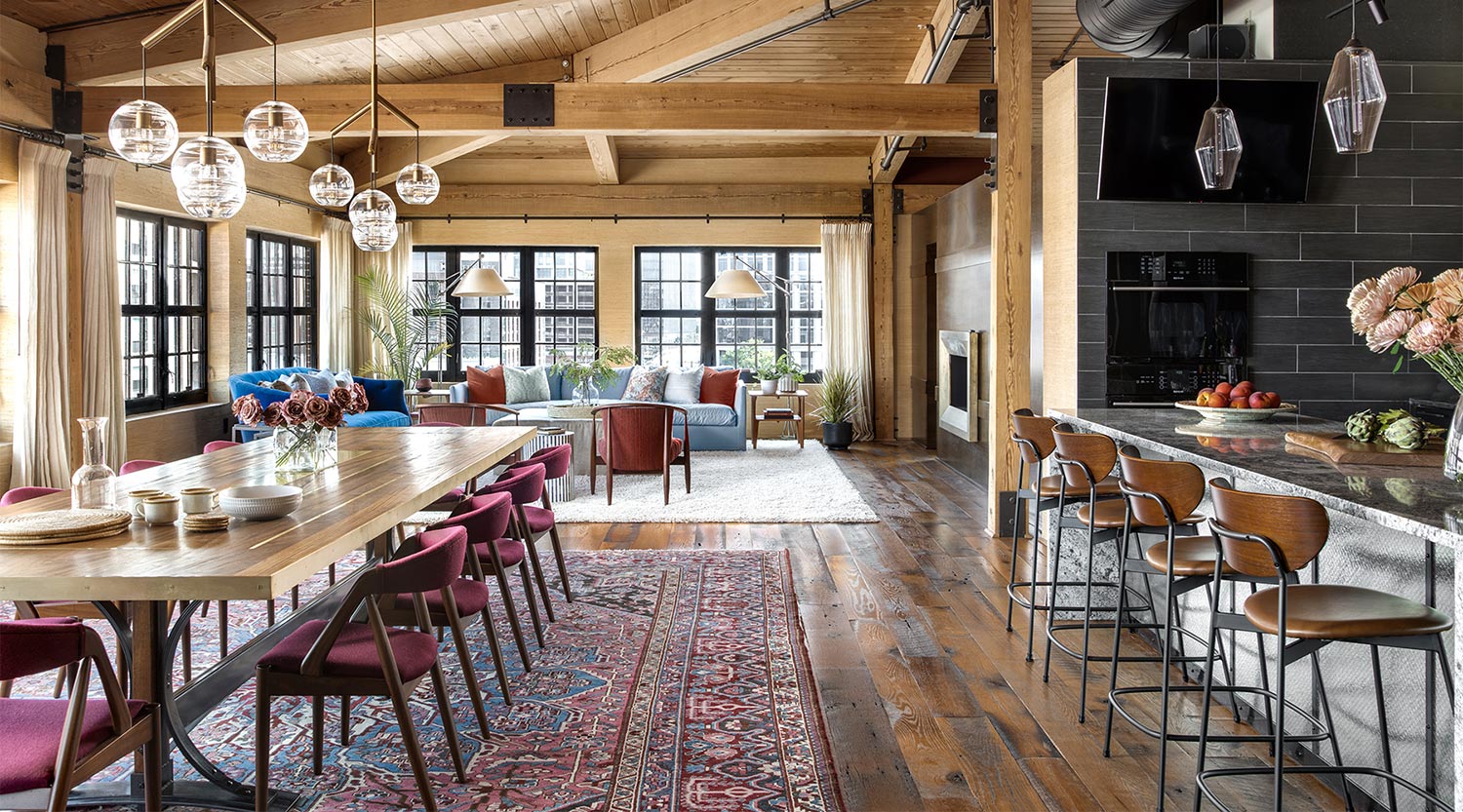
Pairing Antique Rugs with Modern Decor
Decorating with antique rugs is the latest trend to excite interior decorators and their customers seeking unique alternatives to one-dimensional décor concepts. What is so remarkable about richly colored and exotically designed antique rugs is their ability to blend seamlessly with nearly any type of décor — from minimal to eclectic to post-modern chic. For example, Oriental and kilim rugs represent the embodiment of eclecticism, with their bold patterns and compelling blend of earthy hues. They would look gorgeous laid over wood or marble floors or over sisal-type rugs and carpet. Neutral rooms, or rooms exhibiting one or two shades of quiet pastels, would also welcome Oriental rugs that offer the perfect amount of flare, color and personality.
Antique Rug Interior Design Tips
Vital to successfully decorating with antique rugs is knowing how to anchor them within a certain space before adding accessories. Once you have the antique rug you prefer situated in a room, you can build off the colors, designs and textures of the rug by accessorizing with modern art pieces and furniture that extract the beauty of the rug.
Timeless and versatile, antique rugs offer the ability to unify disparate features of any type of décor due to their inherently centralized compositions. Providing a decorative base essential to optimizing specific interior design principles, antique rugs embody both modern and historical elements of balance, harmony and beauty.
If you want to incorporate antique rugs with modern décor, Oriental and Persian rugs can help soften those overly defined lines associated with minimalism and post-modernism. For example, you might consider pairing an antique Persian rug, with its pastel hues and detailed arabesques, with the naturalism of Impressionist artwork. Persian rugs harmonize well with paintings from this period, especially when surrounded by modern or even eclectic-style décor.
Adding Persian carpets to spacious rooms also serves to enhance aesthetic values while making areas more cozy and inviting. With their saturated hues and intricately realized spirals, paisleys, flowers and medallions, Persian carpets are a top choice of high-end interior designers seeking ways to enrich and centralize rooms with extra space.
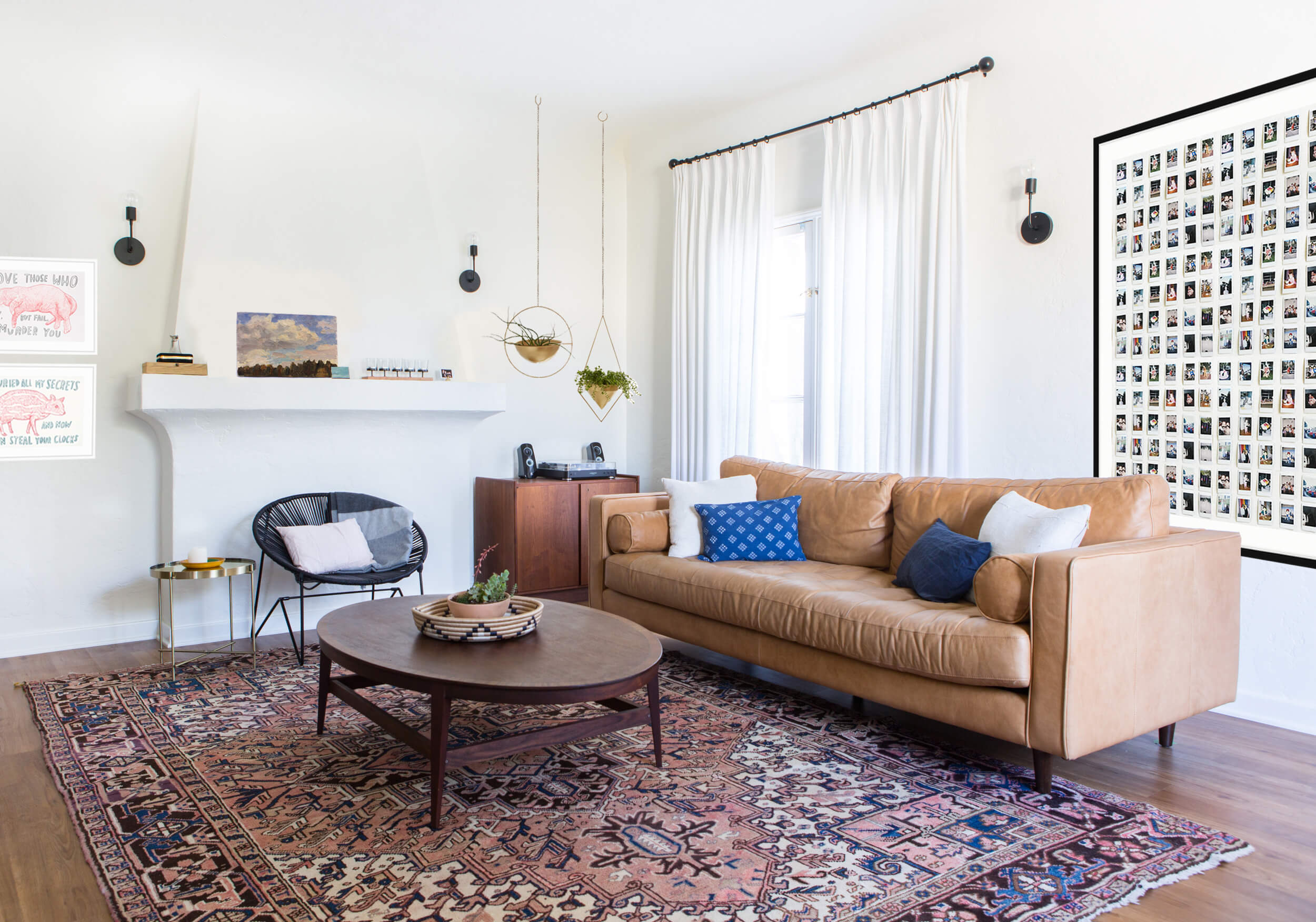
Decorating with antique rugs can be fun, exciting and inspiring, leading to originality and freshness of ideas when re-inventing or reinvigorating a room’s ambience. Esmaili Rugs and Antiques offers thousands of antique and vintage rugs to address all your decorating desires, from Oriental and Persian to Middle Eastern and Native American rugs. If you have specific décor ideas you wish to complete and would like professional assistance in realizing your plans, please call us today at (214) 651-7847 or visit our website here at dallas rugs.
Tips for Buying Antique Rugs Online
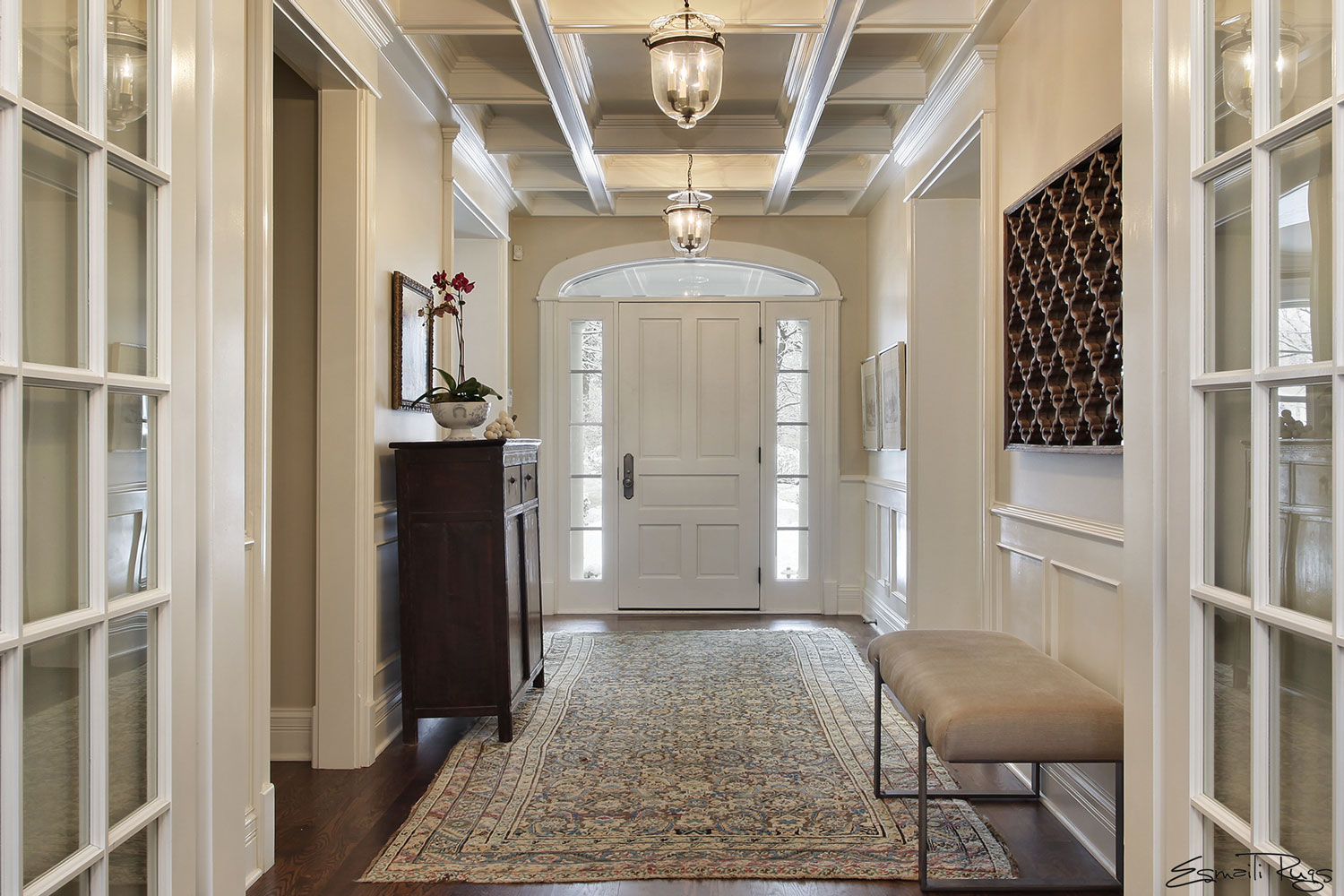
Even if you’ve already purchased a couple antique rugs, there’s still a lot to learn about how to buy antique rugs online. Here is a sampling of frequently asked questions we receive from clients about buying an antique rug:
What is the difference between an “antique” rug and a “vintage” rug?
For a rug to be classified as an antique, it must have been made at least 80 years ago. Other items like paintings, sculptures, furniture and collectibles must be at least 100 years old to be considered antiques. Since rugs are typically walked on, it is expected that rugs suffer more wear and tear than other antique items. Consequently, an 80 to 100 year old rug in fair to good condition is indeed a rarity.
Are larger antique rugs always more expensive than smaller rugs from the same country and era?
Not necessarily. Condition of the rug, its origin and the number of similar rugs known to exist will affect its price more than its size or shape. In fact, a 5’ x 8’ antique rug sold for $10 million recently at Christie’s in London.
What does cash value, auction value, fair retail market value and replacement value mean when referring to antique rugs?
Cash value amounts indicate what the dealer would agree to pay for the rug today. An auction value is the amount an auction house would be willing to reserve the rug for (i.e., the minimum price a rug needs to be sold for before the auction house sells it). The fair retail market value is the price you would pay if you were to find that rug for sale in a store. Finally, replacement values are established for insurance purposes if your antique rug were to be lost or stolen.
When buying an antique rug, should I expect to pay extra to have it restored or repaired?
This is an entirely subjective decision that depends on the person buying the rug. However, certain repairs, such as frayed edges and worn spots, are necessary to keep the rug’s integrity intact. Professional antique rug collectors like Esmaili who personally selects rugs for inclusion in his inventory will make repairs essential to supporting the soundness and value of his rugs before selling them.
Trust Esmaili Rugs & Antiques When Buying an Antique Rug Online
Located in the Dallas Design District, Esmaili Rugs and Antiques is first choice of many high-end interior designers, leading architects, antique rug collectors and rug enthusiasts searching for beautiful, exotic and rare works of rug art. A multi-million dollar business serving a variety of clients across the globe, Esmaili’s Rugs looks forward to giving each customer the kind of attentive, personalized service they would expect from a world-class, antique rug business.
Call us today to learn more about our online antique rugs Dallas collection at (214) 651-7847
Caring for Your Antique Rug
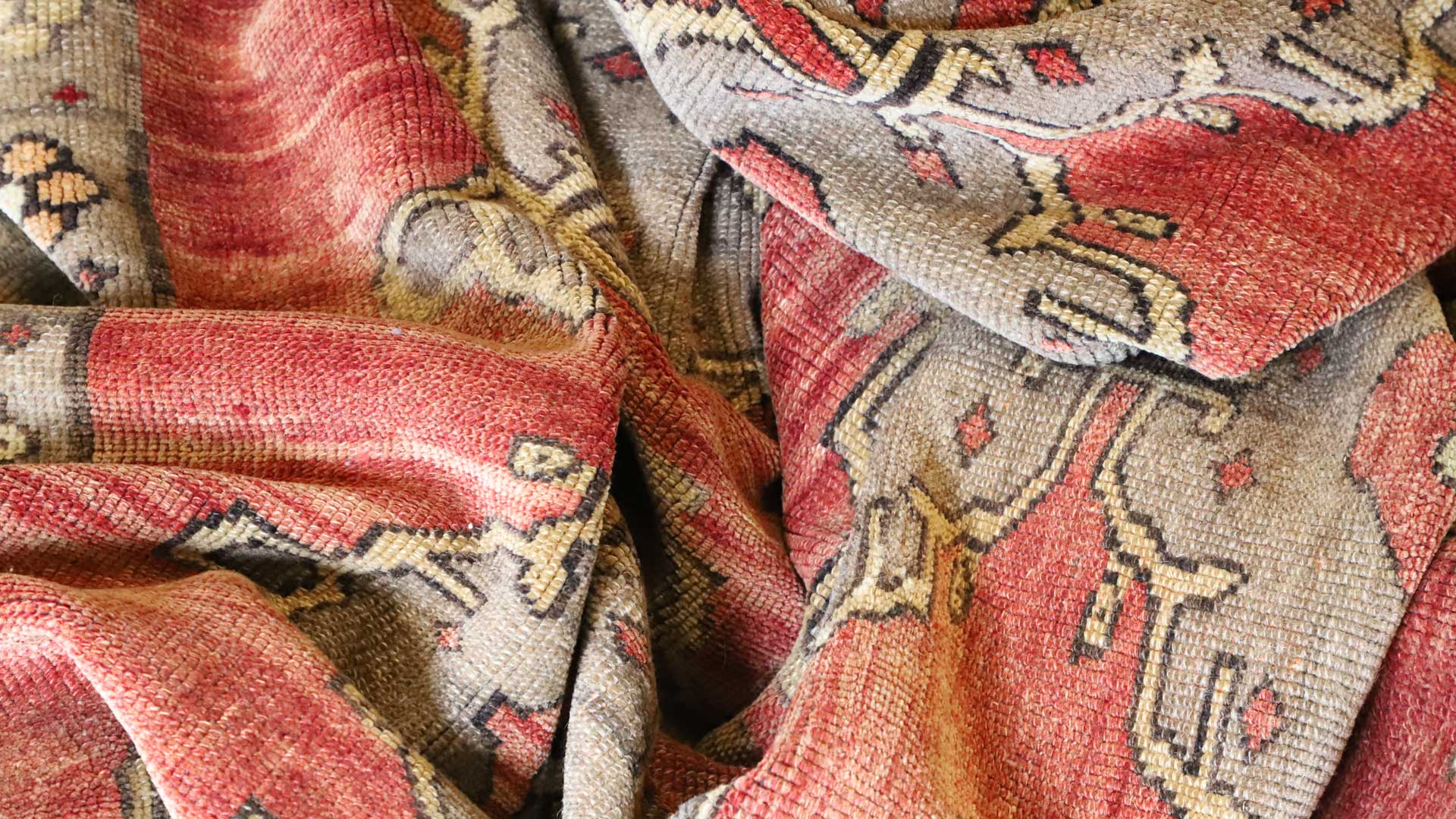
Tips for Maintaining Your Favorite Antique Carpet
Although antique rugs created from natural materials represent some of strongest and most durable textiles ever created, they still require meticulous, loving care to maintain them in their current condition. Here is a comprehensive list of do’s and don’ts to help you take excellent care of your antique or vintage rugs:
Never place potted plants on an antique rug. Water damage occurs rapidly to rugs incorporating a cotton weft and warp foundation, leaving weakened spots that can be torn away from affected areas.
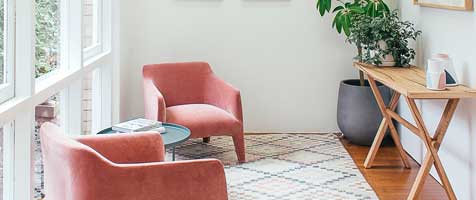
Moths do not eat carpet materials, but larvae hatched from moth eggs do. Antique rugs lying in undisturbed, darker places are vulnerable to being consumed by moth larvae, especially if the rug isn’t regularly vacuumed. Possible signs of a larvae infestation include veil-like cobwebs and debris resembling fine sand. Although rugs damaged by moths can be repaired, reweaving of larger rug areas may be quite expensive.
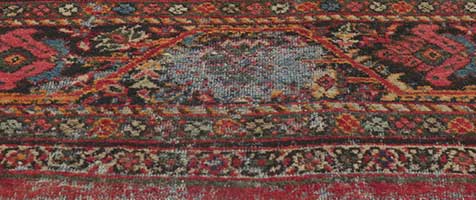
Do not use vacuums equipped with beater bars (power brushes) on antique rugs. They will “rake” the rug’s pile and place unnecessary stress on the rug. Manually brush your rug or have it professionally cleaned.
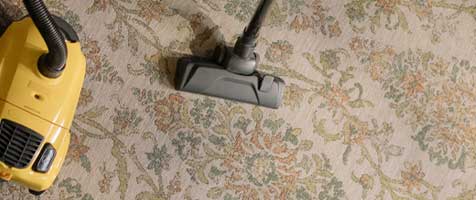
While dyes used in antique rugs resist bleaching or fading, you should still try to keep your rugs out of direct sunlight. Hanging sheers in rooms where rugs are exposed to the sun’s UV rays can help reduce the risk of fading.
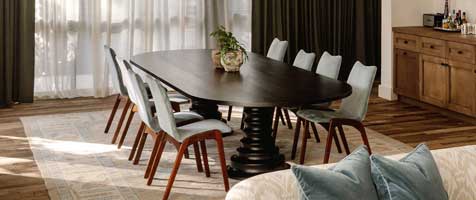
Always place high quality rug padding under your antique rugs to prolong the condition of the rug. Padding cushions the impact of shoe soles against hard floor surfaces to decrease wear and tear and prevent accidental rips. One of the best materials used to make antique rug padding is polyester felt — a strong, dense material that won’t crumble or stick to rugs like rubber padding.
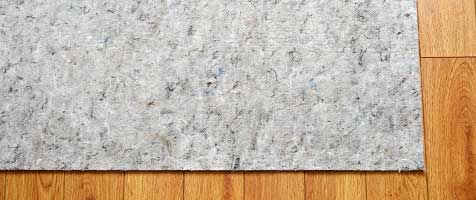
Cover furniture feet with furniture cups to avoid crushing carpet pile. If you move heavy furniture across large antique rugs, slip furniture sliders under feet to help prevent damage to the carpet.
Woven with lanolin-rich wool, antique Persian carpets are exceptionally stain resistant. If you accidently spill something on one of these magnificent rugs, blot the spill with a moist, clean cloth and then blot the spot with a damp sponge. Elevate the spot to facilitate air-drying of moist areas.
Store antique rugs in a dry, clean, climate-controlled environment, preferably between 60 and 75 degrees Fahrenheit, with humidity levels around 65 percent. Wrap carpets in paper instead of plastic, since plastic encourages mildew via moisture condensation. Also, cleaning antique rugs before storing them makes them much less attractive targets for female moths searching for the perfect places to lay eggs.
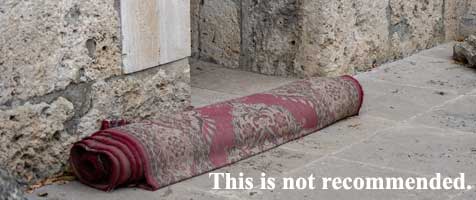
Finally, never use chemical cleaners or OTC (over the counter) organic cleaning solutions on antique rugs to eliminate stains. If a stain persists even after you have blotted and wiped the stain, call Esmaili Rugs & Antiques at (214) 651-7847 to have your rug professionally cleaned.
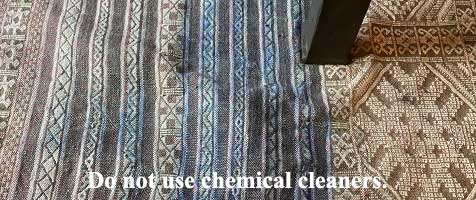
Have A Question? You Can Connect with Our Support Team by phone at (214) 651-7847 or Schedule an Appointment for In-Store at 1511 Dragon Street in the Dallas Design District. We Always Love Hearing from Antique Rug Enthusiasts, Architects, Interior Designers, Decorators or Anyone Searching for Rare Authentic Carpets in Dallas.

